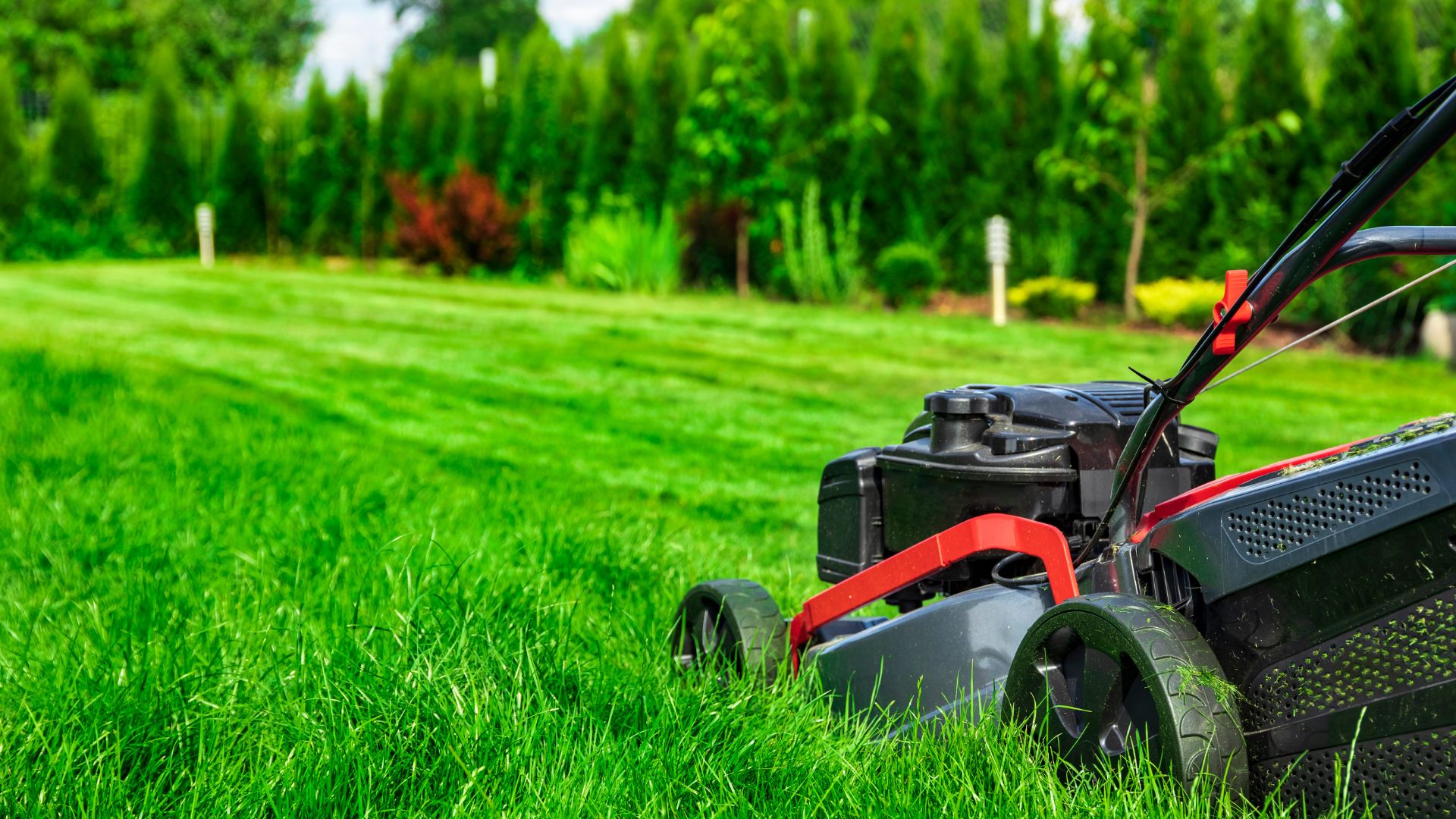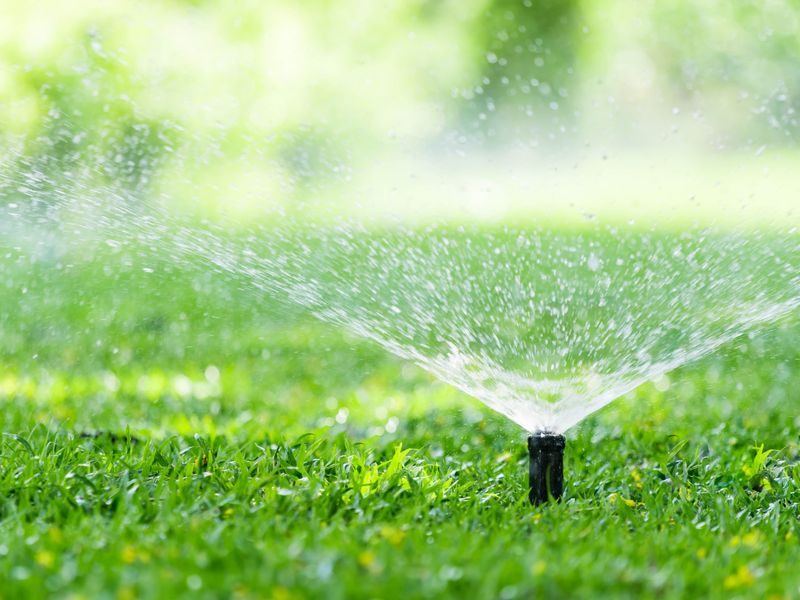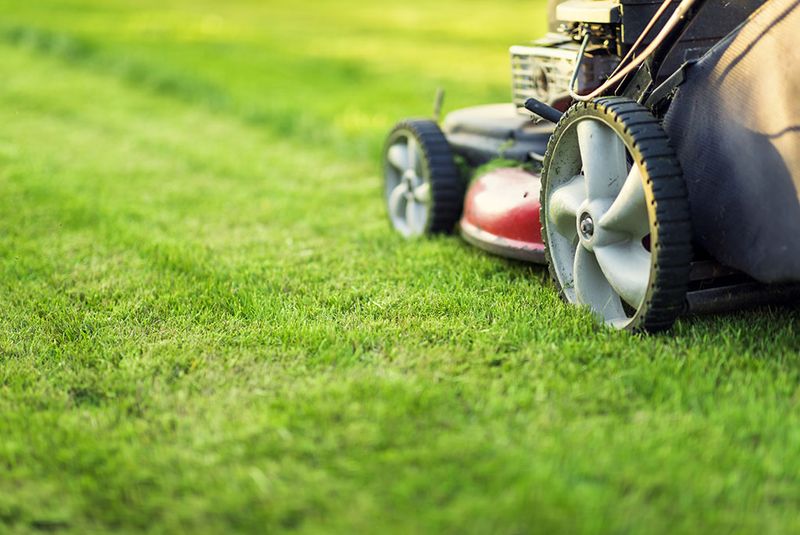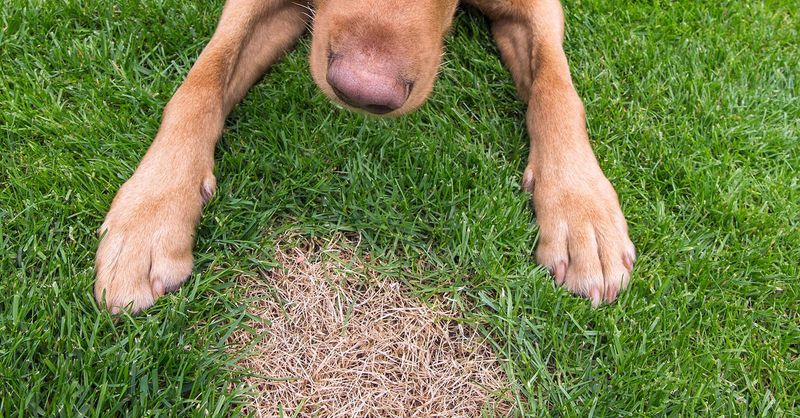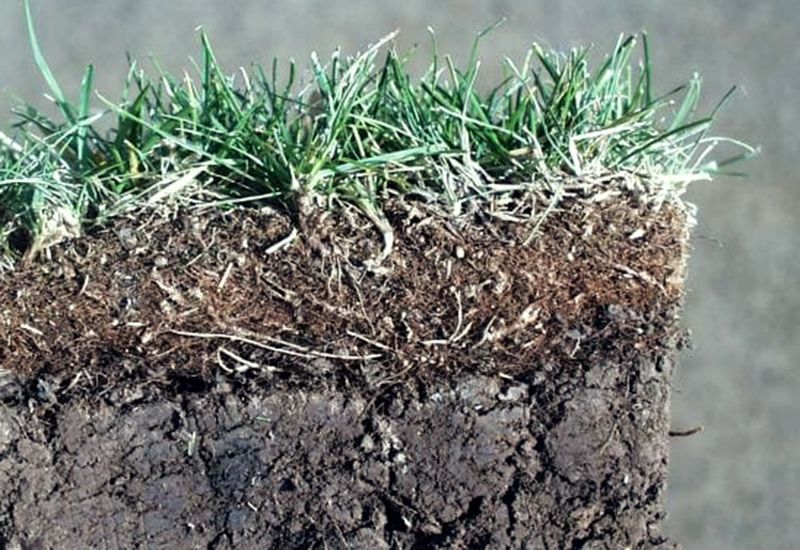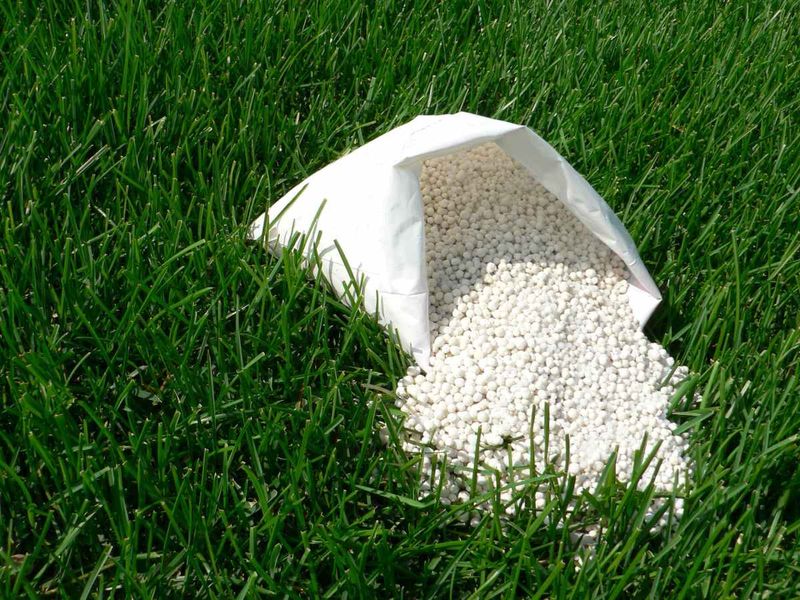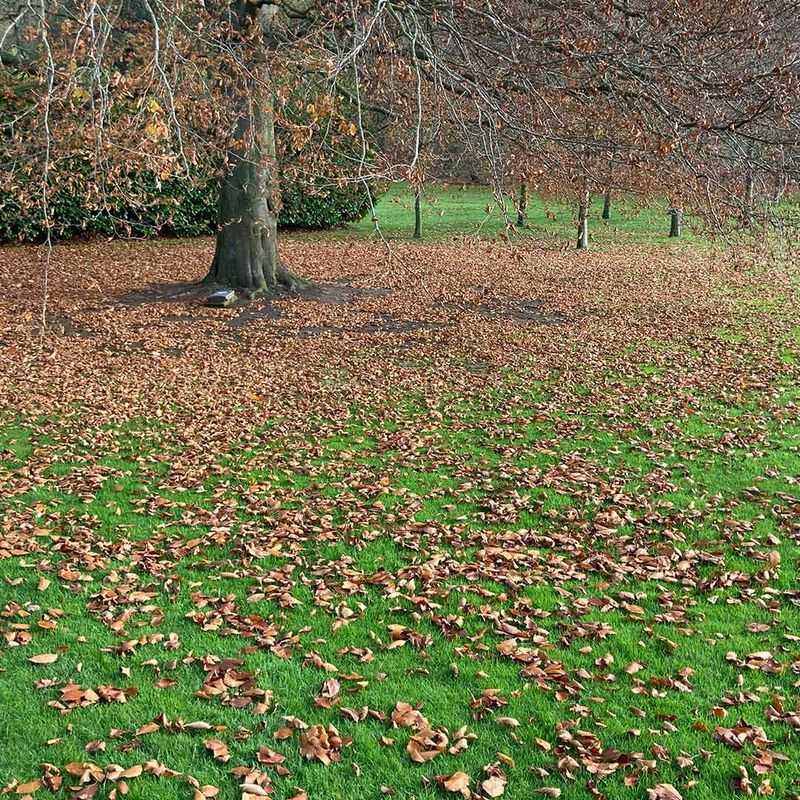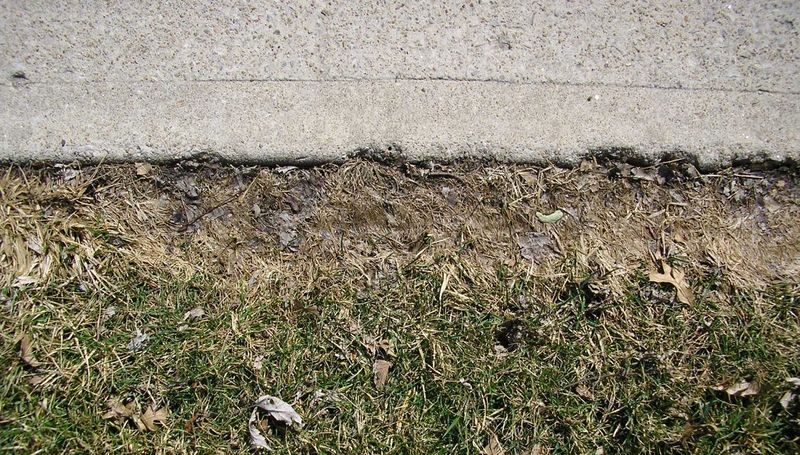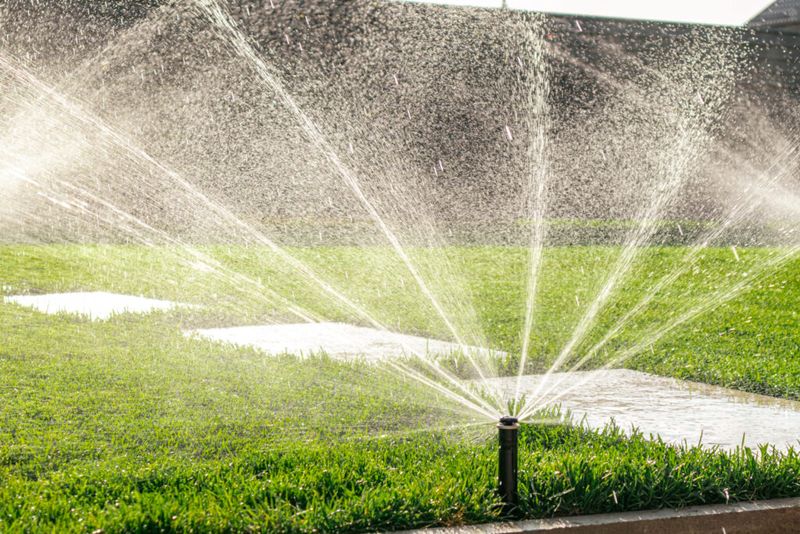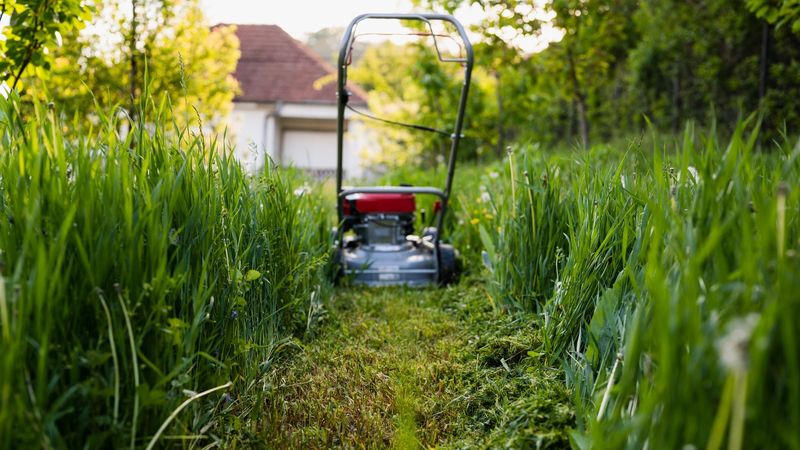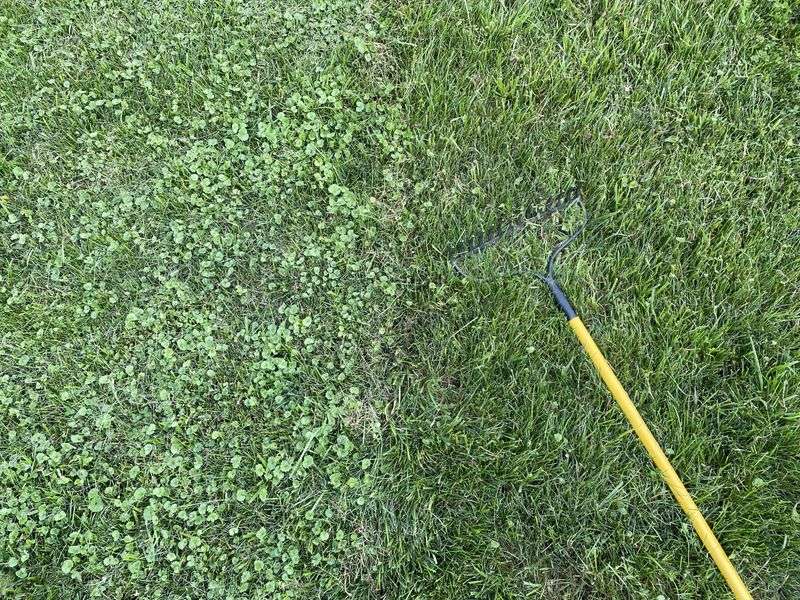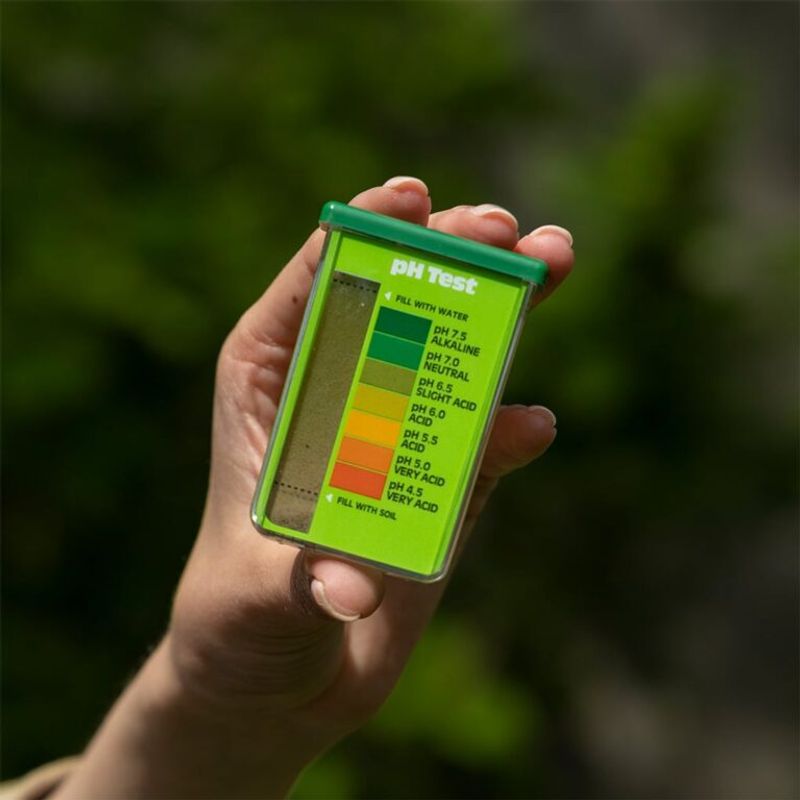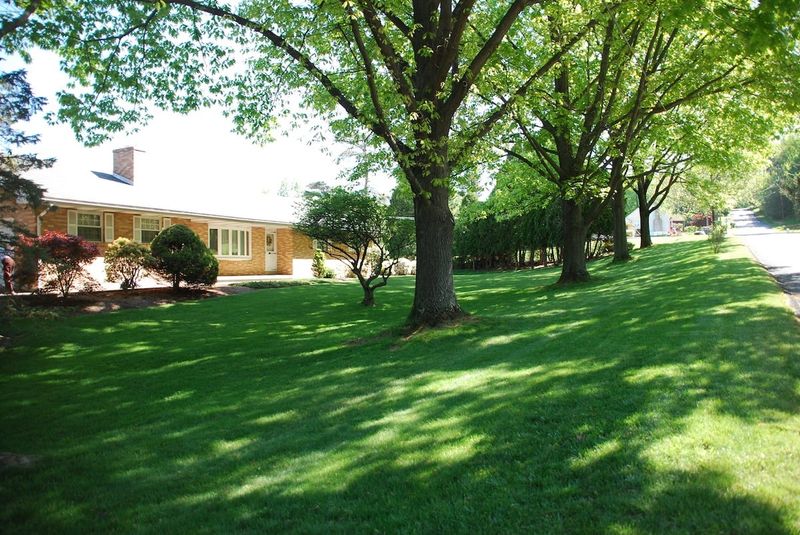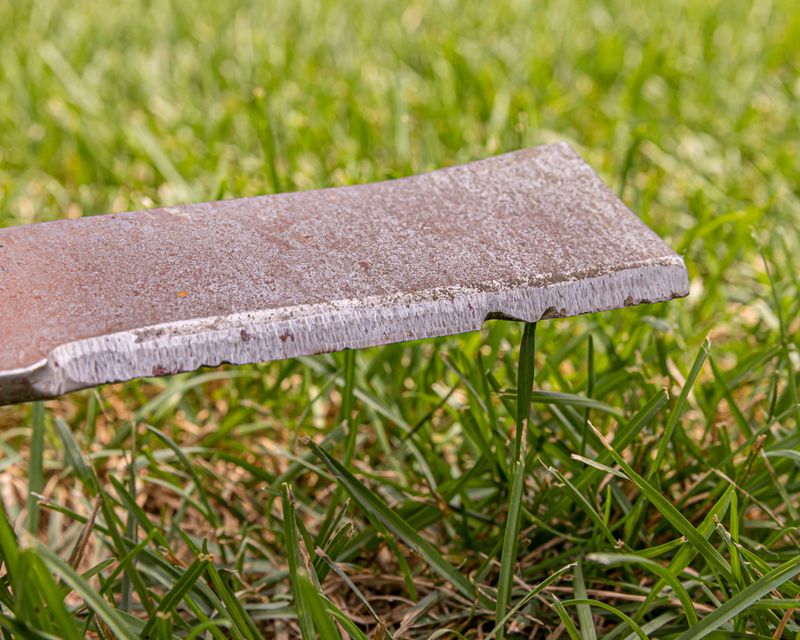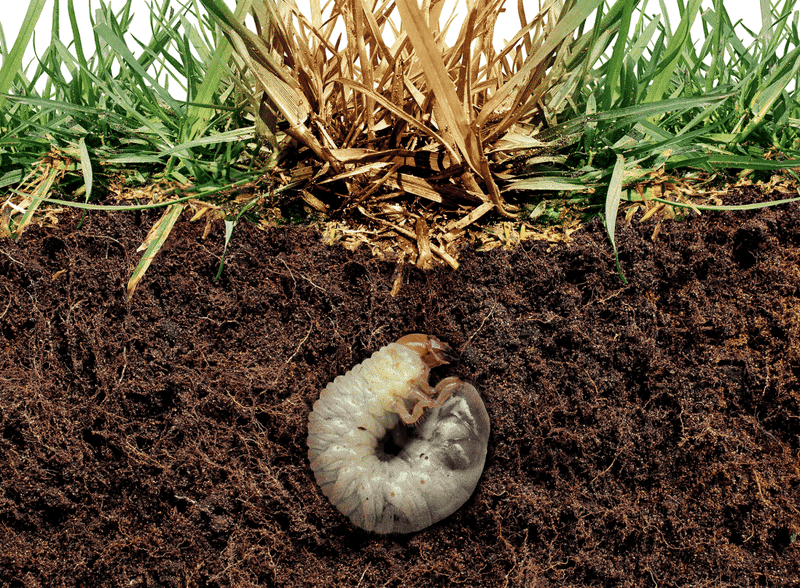A green lawn might look effortless—but behind every healthy yard is someone who’s figured out what not to do. And if you’ve been wondering why your grass isn’t thriving, even though you’re watering, mowing, and doing “all the right things,” you’re definitely not alone.
I’ve learned (sometimes the hard way) that it’s often the everyday habits—the ones we don’t think twice about—that quietly sabotage our lawns. From how often you mow to what time you water, small choices can make a big difference. Once you know what’s really going wrong beneath the surface, those dry patches and dull spots start to make a lot more sense.
Here’s a closer look at what might be holding your lawn back—and how a few simple changes can help it bounce back better than ever.
1. Overwatering Your Lawn
Many homeowners think more water equals healthier grass. The truth is, daily shallow watering encourages weak, shallow root systems that can’t survive drought or stress. Your sprinkler system might be drowning your lawn without you realizing it.
Waterlogged soil prevents oxygen from reaching grass roots and creates the perfect breeding ground for fungal diseases. When roots sit in constantly wet soil, they can literally rot away. Those soggy patches that never seem to dry out are a warning sign.
Water deeply but less frequently – about 1-1.5 inches once or twice weekly depending on your climate. This encourages roots to grow deeper seeking moisture, creating drought-resistant grass that stays green even during dry spells.
2. Mowing Too Short
That perfectly manicured golf-course look might seem ideal, but cutting grass too short is one of the quickest ways to weaken your lawn. Short grass has less surface area for photosynthesis, which means it can’t produce enough energy to maintain healthy roots and recover from stress.
Scalped lawns become vulnerable to weed invasion because sunlight easily reaches the soil surface, germinating weed seeds that would otherwise remain dormant. Heat stress increases dramatically with shorter grass height since there’s less blade surface to provide cooling shade to the soil and roots.
Follow the one-third rule: never remove more than one-third of the grass height in a single mowing. For most cool-season grasses, maintain a height of 2.5-3.5 inches, and slightly shorter for warm-season varieties.
3. Pet Urine Spots
Those mysterious brown circles scattered across your lawn aren’t from aliens – they’re likely from your four-legged friend. Dog urine contains concentrated nitrogen that initially acts like fertilizer but quickly burns grass when applied in high concentrations to one spot.
Female dogs cause more damage than males because they tend to empty their bladder in one location rather than marking multiple spots. The center of these spots often dies completely while the edges may actually grow faster and greener than surrounding grass due to diluted nitrogen levels at the perimeter.
Train your dog to use a designated bathroom area covered with gravel or mulch. For existing spots, immediately flood the area with water to dilute the urine. Consider lawn-specific products that neutralize the nitrogen in pet waste.
4. Excessive Thatch Buildup
Between your grass and soil lies a layer of dead stems, roots, and other organic debris called thatch. A thin layer (less than ½ inch) actually benefits your lawn by providing insulation. When thatch grows thicker, it becomes a serious problem that blocks water, fertilizer, and air from reaching the soil.
Thick thatch creates a perfect environment for insect pests and lawn diseases to thrive while protected from control measures. Grass roots may actually begin growing in the thatch layer instead of the soil, making them extremely vulnerable to drought stress and temperature fluctuations.
Check thatch thickness by removing a small wedge of lawn with a trowel. If it exceeds ½ inch, dethatch using a power rake or vertical mower. For minor thatch issues, core aeration can help by introducing soil microorganisms that accelerate thatch decomposition.
5. Using The Wrong Fertilizer
Grabbing any fertilizer off the shelf might seem fine, but using products with incorrect nutrient ratios can create more problems than they solve. Quick-release synthetic fertilizers cause rapid growth spurts followed by stress periods, weakening grass over time and creating a feast-or-famine cycle for your lawn.
Excess nitrogen – the first number on fertilizer bags – promotes lush green growth but can reduce root development and increase disease susceptibility. Too much phosphorus (the middle number) can build up in soil and eventually run off into waterways, causing environmental damage without benefiting your grass.
Start with a soil test to determine exactly what your lawn needs. Consider slow-release organic options that feed grass gradually without burning. Apply fertilizer based on grass type and season – cool-season grasses need more in fall, while warm-season varieties benefit from summer feeding.
6. Allowing Leaf Buildup
Fall leaves create a picturesque scene, but letting them pile up on your lawn spells trouble. Matted wet leaves block sunlight from reaching grass blades, preventing photosynthesis and weakening plants. Even a seemingly thin layer can suffocate grass if left for several rainy days.
Leaf cover creates ideal conditions for snow mold and other fungal diseases that attack dormant grass during winter. The damage often isn’t visible until spring, when dead patches appear where leaves were left too long. The decaying process also changes soil pH over time, potentially creating conditions grass doesn’t prefer.
Mulch leaves with your mower instead of raking when the layer is light – the tiny pieces decompose quickly and add organic matter to soil. For heavier leaf fall, remove or mulch at least weekly during autumn to prevent damage to the grass beneath.
7. Salt And De-icing Chemicals
Winter safety measures on sidewalks and driveways often lead to spring lawn problems. Road salt and chemical de-icers splash onto grass edges, where they draw moisture from grass blades and roots through osmosis. This dehydration effect essentially burns plants from the inside out.
Salt buildup in soil disrupts nutrient uptake and creates toxic conditions that can persist for months. The damage typically appears as brown strips along driveways and walkways once snow melts. Repeated exposure over years can make these areas permanently unable to support healthy grass growth.
Use physical removal (shoveling) as your primary snow management strategy. When de-icers are necessary, choose products labeled as “pet-safe” or “plant-friendly” which typically contain calcium magnesium acetate instead of sodium chloride. In spring, thoroughly water affected areas to flush salts from soil.
8. Improper Watering Timing
Afternoon sprinkler sessions might seem convenient, but they’re secretly damaging your lawn. Water droplets act like tiny magnifying glasses during peak sunlight, intensifying rays and potentially scorching grass blades. Much of this midday moisture also evaporates before roots can absorb it, wasting water and money.
Evening watering creates its own problems by leaving grass wet overnight. This extended moisture period creates perfect conditions for fungal diseases like dollar spot and brown patch to develop. The damage often appears as circular patches or web-like growths visible in morning dew.
Early morning (4-10am) is ideal for lawn irrigation. Grass has time to dry completely before evening, preventing disease, while cooler temperatures and typically calmer winds reduce evaporation. If using automatic sprinklers, adjust seasonal start times to maintain this optimal window.
9. Chemical Spills And Leaks
Everyday activities around your yard can leave invisible lawn killers behind. Oil drips from the mower, gasoline spills while refueling, or even washing your car in the driveway send chemicals into your grass that damage or kill it outright. Unlike some problems that develop slowly, chemical damage often appears within days.
Hydrocarbons in petroleum products coat soil particles, preventing water absorption and literally suffocating roots. Harsh cleaning chemicals change soil pH and destroy beneficial microorganisms that grass depends on. The dead spots from these spills can persist for months or years as contaminated soil remains hostile to new growth.
Perform equipment maintenance over garage floors or pavement that can be cleaned, not grass. For car washing, use phosphate-free, biodegradable soaps or commercial car washes that recycle water. If spills occur, immediately scoop up contaminated soil and replace with fresh topsoil before reseeding.
10. Inconsistent Mowing Schedule
Going too long between mowings forces grass through a stress cycle that weakens it over time. Letting grass grow tall, then cutting it short removes too much leaf surface at once, depleting the plant’s energy reserves. The shock can stunt growth for weeks.
Grass clippings from overgrown lawns form thick mats that block sunlight and air from reaching living grass below. These clumps must be raked up instead of being left to decompose naturally, removing nutrients that would otherwise return to the soil. Irregular cutting also allows weeds to flower and set seed between mowings.
Establish a consistent schedule based on growth rate, not calendar days. During peak growing seasons, this might mean mowing every 5-7 days. Adjust blade height seasonally – slightly higher in summer heat provides more shade for roots, while a slightly lower cut in fall prevents matting under snow.
11. Weed Killer Misuse
Spraying herbicides incorrectly often damages the grass you’re trying to protect. Many homeowners apply weed killers during hot weather when grass is already stressed, or use concentrations stronger than recommended, thinking it will work better. Both practices can backfire dramatically.
Non-selective herbicides like glyphosate kill any plant they contact, while even selective herbicides can damage grass if applied during temperature extremes. Drift from sprays intended for garden beds frequently causes mysterious brown edges along lawn borders.
Always follow label instructions exactly, including temperature restrictions. Use spot treatments on individual weeds rather than broadcasting chemicals across the entire lawn. Consider non-chemical alternatives first – proper mowing height, adequate fertilization, and overseeding naturally crowd out many common weeds.
12. Ignoring Soil PH
Your grass might be struggling simply because the soil is too acidic or too alkaline. Most lawn grasses prefer a slightly acidic environment with pH between 6.0 and 7.0. When soil drifts outside this range, nutrients become chemically locked up and unavailable to plants, even if they’re physically present.
Acidic soil (below 6.0) often develops in regions with high rainfall or under pine trees. It limits calcium and magnesium uptake while making potentially toxic aluminum more available. Alkaline soil (above 7.0) is common in arid regions and areas with limestone bedrock, causing iron deficiency that appears as yellowing between leaf veins.
Test your soil pH every 2-3 years using an inexpensive kit from garden centers. Add lime to raise pH or sulfur to lower it, following application rates based on your test results. These amendments work slowly, so patience and repeated testing are key.
13. Heavy Shade Conditions
Those struggling patches under trees aren’t just lacking sunlight – they’re losing an underground competition too. Tree roots outcompete grass roots for water and nutrients, while fallen leaves and natural chemicals released by some trees (particularly walnuts, oaks, and pines) can actively suppress grass growth.
Most common lawn grasses need at least 4-6 hours of direct sun daily. In deep shade, they grow thin and weak, with elongated stems stretching for light. This makes them more susceptible to disease and wear damage.
Consider shade-tolerant grass varieties like fine fescues that need as little as 3-4 hours of filtered sunlight. Thin tree canopies selectively to allow more light through. Where grass consistently fails, create mulched beds with shade-loving ground covers that complement your landscape without competing with trees.
14. Using Dull Mower Blades
When was the last time you sharpened your mower blade? Dull blades tear grass rather than cutting it cleanly, creating ragged edges that turn brown and increase water loss. From a distance, the lawn takes on a tan or whitish cast instead of healthy green.
These jagged wounds create entry points for disease organisms and require the plant to use extra energy healing instead of growing. The damage is often mistaken for other problems, leading to unnecessary treatments that don’t address the real issue.
Sharpen mower blades at least twice during growing season – typically spring and midsummer. You’ll know it’s time when grass tips look frayed or torn rather than cleanly sliced. For larger lawns that require frequent mowing, keep a spare sharpened blade ready to swap when needed.
15. Grub Infestations
The problem might be lurking just below the surface: white C-shaped grubs feasting on grass roots. These larvae of beetles (including Japanese beetles, June bugs, and chafers) chew through root systems, disconnecting grass from its water and nutrient supply. Affected areas feel spongy underfoot and can be pulled up like loose carpet.
Birds, moles, and skunks digging in your lawn often indicate a grub problem – they’re hunting for these protein-rich snacks. The damage typically appears in late summer or early fall when grubs are most active and growing larger.
Check for grubs by cutting and peeling back a square foot of turf in several locations. Finding more than 5-10 grubs per square foot warrants treatment. Milky spore and beneficial nematodes offer natural control options, while chemical treatments work best when grubs are young and feeding near the surface.

